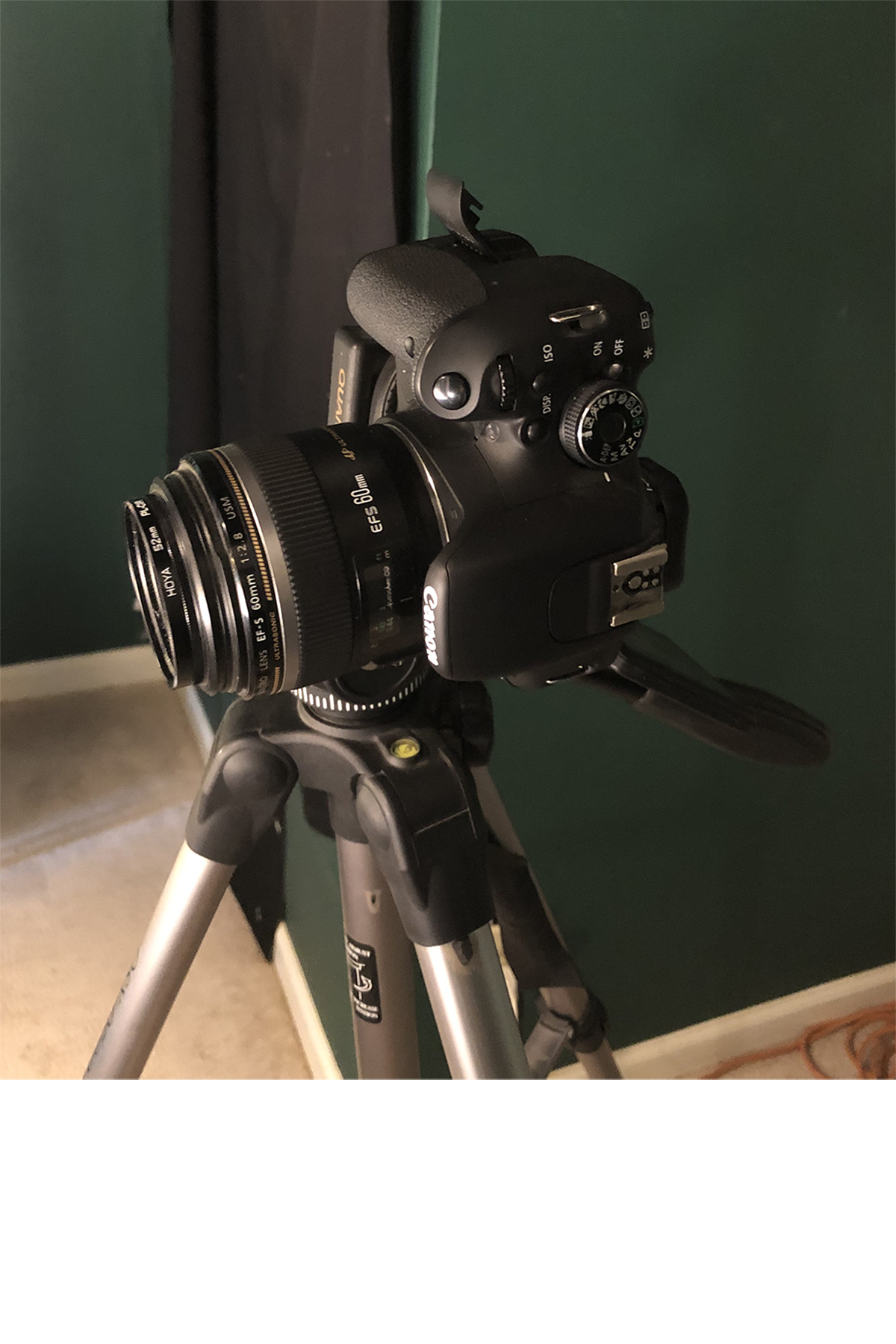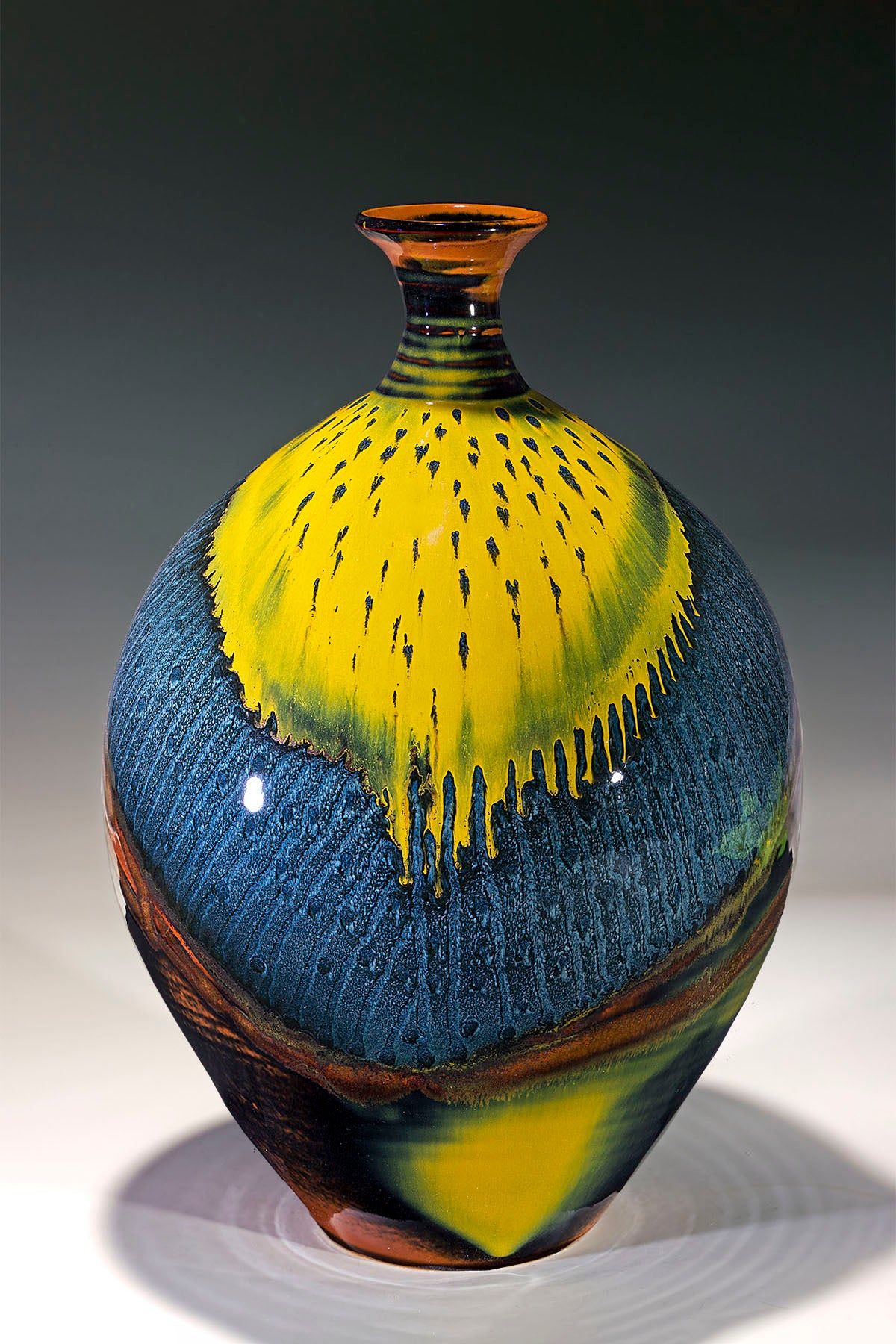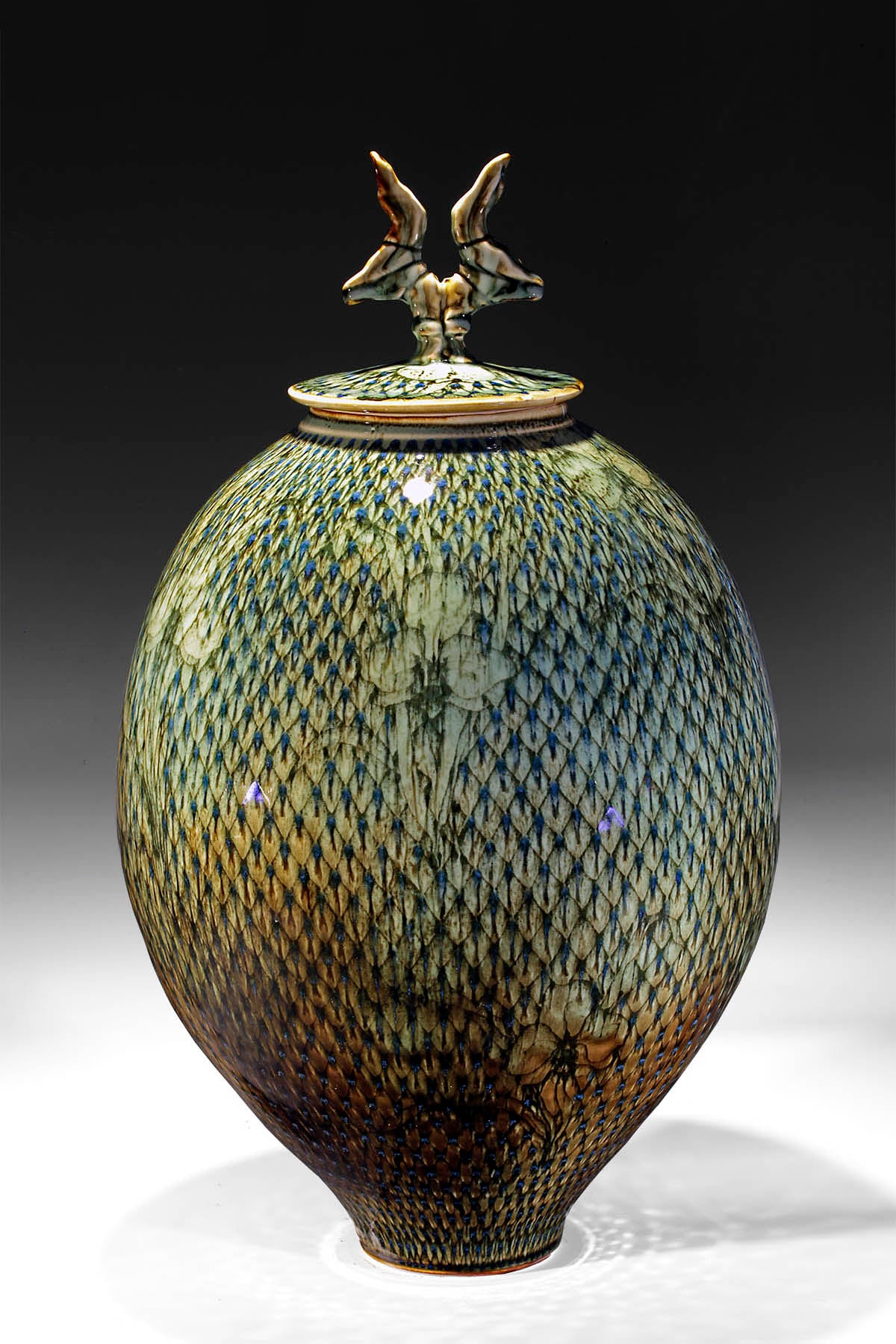Photographing the work 2.0
Recently, I purchased some new lights to allow me to try and shoot some videos. The lights that I had been using were Ceramic Metal Halide Spots that produced about 4000 lumens at a color temp of about 3200K. The new lights are LED panels from Neewer which have 660 LEDs of which half are yellow and half are white. There are dials to adjust both color temperature as well as brightness and came with adjustable tripods.
In my last post about lighting I described a setup with a top light and two side lights and linear polarizing filters in front of each light and a circular polarizing filter on the camera. The new setup included a diffuser for each panel. I tried the diffuser and had the same results that I've always had, white bleaching of parts of the pieces. I removed the diffusers and mounted the polarizing filters. Each of the side lights were now panels, and the top light was the CMH. I adjusted the color temperature on the panels to match the CRM top light and began to shoot. I again had a significant problem with glare on the lower half of the work, so I used my previous method of shooting the image twice described in the previous post. I also shot with a dark and a lighter background.


I posted the two images on Facebook to get some dark/light feedback on which one people generally preferred. Most people liked the darker background better, but several people thought the shadows at the top and around the base were distracting. The top light was casting the shadow, and when I removed it, I also discovered that the top light was responsible for the glare on the bottom half of the piece. Without the top light, I could shoot the piece once with very limited glare and only slight shadowing at the base. With this setup, shooting the work is much faster with much better results, and requires very limited editing with Photoshop, and truer color accuracy.

The graduated background is from Flotone and available from Amazon. I'm still using a top light, but now it only hits the top back of the graduated background to lighten the top a bit. All the lights are adjusted to 5000K. The black felt is outside the frame, and is helpful in reducing some glare from the side lighting.







